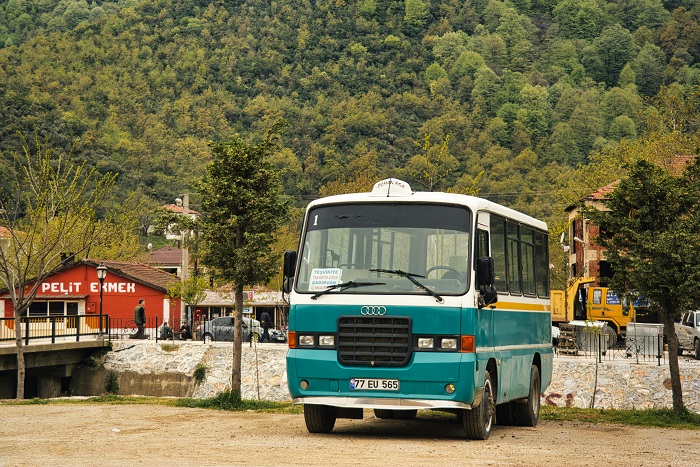Reliable transport plays a vital role in the daily operations of schools and care homes across the UK. For schools, minibuses ensure that students can participate in a wide range of educational trips, sports events, and extracurricular activities, enhancing their overall learning experience. A dependable minibus service helps to maintain punctuality and safety, which are essential for student welfare. Additionally, having access to reliable transport allows schools to plan more dynamic and varied activities, contributing to a well-rounded education.
For care homes, reliable transport is equally vital. It ensures that residents can attend medical appointments, social outings, and community events, which are important for their health and well-being. A minibus service tailored to the needs of care homes can provide wheelchair accessibility and other features that cater to elderly or disabled residents. This not only enhances their quality of life but also promotes greater independence and social inclusion. Investing in a dependable minibus service can thus significantly improve the operational efficiency and service quality of both schools and care homes.
The Accessibility Features of Wheelchair-Accessible Vehicles (WAVs)
Ensuring that your minibus is wheelchair accessible is crucial for accommodating all passengers, particularly in schools and care homes where mobility issues are more common. A wheelchair-accessible minibus typically includes features such as a low-floor design, a ramp or lift, and adequate space for manoeuvring. These features make boarding and alighting easier and safer for wheelchair users. Securing systems and straps are necessary to ensure that wheelchairs can be safely anchored during transit, providing stability and safety.
Comfort and safety are paramount when transporting wheelchair users. The minibus should have sufficient headroom and wide aisles to accommodate wheelchairs comfortably. Seating arrangements should be flexible, allowing for a combination of wheelchair spaces and standard seats to cater to varying passenger needs. Properly trained staff or drivers who understand how to operate accessibility features and assist passengers with special needs are also essential. Regular maintenance checks should be carried out to ensure all accessibility features are in good working order. Investing in a wheelchair-accessible minibus not only enhances the inclusivity of your transport services but also ensures that all passengers, regardless of their mobility needs, can travel comfortably and safely.
Safety Inspection Standards for Minibuses
Safety is a top priority when it comes to transporting students and care home residents. Ensuring that your minibus meets rigorous inspection standards is essential for the well-being of all passengers. Regular inspections help identify potential mechanical issues before they become serious problems, ensuring the vehicle is always in optimal condition. These inspections typically cover key areas such as brakes, tyres, lights, and steering systems, verifying that all components are functioning correctly and safely.
Safety inspections also include an evaluation of the minibus’s safety equipment. This includes seat belts, emergency exits, and first aid kits, all of which must be in good working order and easily accessible. The interior and exterior of the minibus should be inspected for any signs of wear and tear that could compromise safety, such as loose seats or damaged bodywork. Ensuring that your minibus complies with all relevant safety regulations not only protects your passengers but also demonstrates a commitment to maintaining high standards of care and responsibility. Regular safety inspections are a crucial part of minibus maintenance, providing peace of mind and ensuring a safe travel experience for everyone on board.
Procurement Options – Buying vs. Leasing Your Minibus
When deciding between buying and leasing a minibus, it is important to weigh the benefits and drawbacks of each option. Purchasing a minibus outright gives you full ownership and the ability to customise the vehicle to meet specific needs. However, the initial cost can be substantial, and ongoing maintenance and depreciation must be considered. Buying is often suitable for organisations with a larger budget and a long-term transport strategy.
Leasing a minibus, on the other hand, can be a more flexible and cost-effective solution. Leasing allows for lower upfront costs and predictable monthly payments, which can be beneficial for budgeting. Maintenance and repairs are often included in lease agreements, reducing the burden on your organisation. This option also provides the opportunity to upgrade to newer models at the end of the lease term, ensuring access to the latest safety and accessibility features.
For those looking to explore their options, there are minibuses for sale in the UK market that offer a range of features and sizes to suit various needs. Whether you choose to buy or lease, understanding your organisation’s requirements and financial situation will help you make the best decision for your transport needs.
Funding Tips for Schools, Care Homes, and Charities
Securing funding for a minibus can be a challenge, but there are several strategies that can help schools and charities achieve their goals. One effective approach is to apply for grants specifically designed to support transport services. Various foundations and government programs offer funding to organisations that provide essential services to the community, including transport for educational trips or care home outings. Researching and applying for these grants can significantly offset the cost of purchasing a minibus.
Crowdfunding is another viable option. Engaging the local community through fundraising events or online platforms can generate substantial support. Highlighting the benefits of the minibus for students or residents can motivate donors to contribute. Partnering with local businesses for sponsorship can provide both financial support and a sense of community involvement. Businesses often appreciate the opportunity to support local initiatives, particularly those that benefit education or healthcare.
Finally, consider financing options such as low-interest loans or lease agreements that include maintenance. These can make the cost more manageable by spreading payments over time. Combining multiple funding sources can provide a comprehensive solution, ensuring your organisation has the necessary resources to purchase a minibus and continue offering valuable services to those who need them most.
Cost-Effective Solutions for Schools and Care Homes
Budgeting for a minibus requires careful consideration of both upfront and ongoing costs. The initial purchase price is a significant factor, but insurance, maintenance, fuel, and potential repairs should also be accounted for. Understanding these costs can help create a realistic budget that ensures the minibus remains operational and safe over its lifetime.
Leasing a minibus can offer a more predictable and manageable financial commitment. Lease agreements often include maintenance and repair costs, making it easier to budget for these expenses. Monthly lease payments can be easier to accommodate within a fixed budget, providing access to reliable transport without a large initial outlay. This can be particularly beneficial for schools, care homes, and charities that need to manage their finances carefully.
Exploring funding options is another way to make minibus acquisition more affordable. Grants and financial assistance programs are available for organisations that provide transport services to vulnerable or underserved populations. These funds can help offset the costs of purchasing or leasing a minibus, making it more accessible for organisations with limited budgets. Careful financial planning and exploring all available options can help ensure your organisation secures the right minibus within its budget constraints.
Investing in a reliable minibus can significantly enhance the transport capabilities of schools, care homes, and other organisations. Understanding the specific needs and ensuring accessibility features are in place is crucial for the safety and comfort of all passengers. Prioritising these factors will not only improve operational efficiency but also enhance the overall experience for those who rely on your transport services.



















Leave a Reply